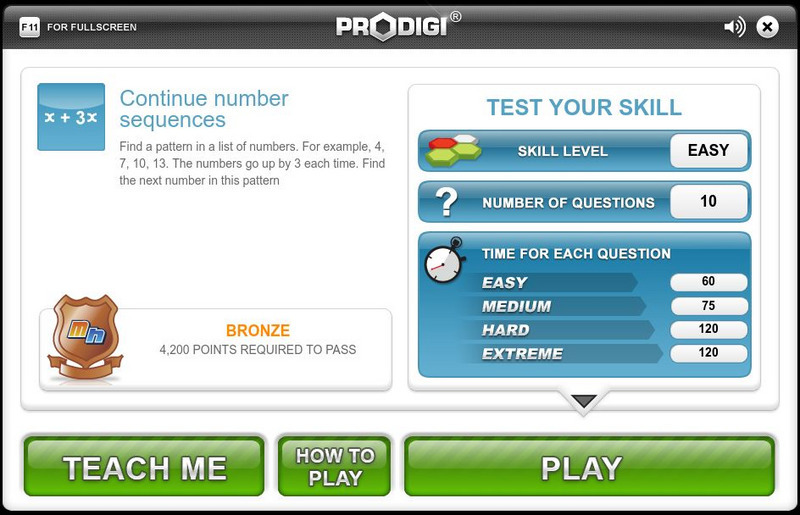Hi, what do you want to do?
Curated OER
A World of Symmetry
Middle schoolers identify lines of symmetry. In this symmetry lesson, students create objects and identify their lines of symmetry. They answer questions about lines of symmetry. Middle schoolers cut shapes out of...
Curated OER
Celebrate Comprehension with Classical Characters
Students listen to books and answer questions using reading skills. In this reading lesson, students develop reading strategies such as decoding, understanding characters, and comprehension. Students relate characters and events in the...
Curated OER
Discovering Russian Folk Dance
First graders explore the art of Russian folk dancing. In this cultural traditions lesson, 1st graders research the Troika and incorporate attributes of the Russion folk dance into their own renditions.
Curated OER
A Changing Society: Industrialization and Urbanization
Students participate in activities that teach them about the Gilded Age of industrialization and urbanization. In this social changing lesson plan, students answer questions, watch videos, have discussions, read texts, and more to teach...
Curated OER
Sowing Seeds: the Beginning of the Fast Plant Life Cycle
Students plant seeds, observe and tend plants. They identify major plant parts, how to germinate and troubleshoot problems with plants; and, that plants need water, light, and soil nutrients to thrive. They create a Plant Growth Data Log.
Curated OER
Classroom Cladogram of Vertebrate/Human Evolution
Middle schoolers build a Colossal Classroom Cladogram of vertebrate evolution. After putting it together, they show the gradual, mosaic accumulation of the traits which we, as humans, possess.
Curated OER
Canada: A Land Rich in Beauty and Culture
Third graders in groups research the different regions of Canada. They create a timeline to put the major events of Canada's history in order.
Curated OER
Tansai Sumi Painting
First graders study Japanese art and apply the technique of Tansai Sumi (lightly colored) to create individual works of art. Painting, design, lines, and drawing techniques are covered in this 1st grade lesson.
Curated OER
The Power of Persuasion
Students explore the power of persuasion. In a classroom setting, students discuss incentives, testimonials and deceptive pricing schemes that are used to influence others. After observing professionally made infomercials, students...
Curated OER
Where Will I Go From Here?
Students research the various cultures in Colonial America. In this American history lesson, students analyze and complie the research they find presenting what they have found into a short presentation.
Curated OER
The Cherokee: Trail Where They Cried
Students read the Trail of Tears about the Cherokee Nation removal and write a letter pretending they are the grandparent of a Cherokee child. In this Trail of Tears lesson plan, students understand the changing of boundaries.
Primary Resources
Primary Resources: Patterns and Number Sequences
A large collection of teacher resources for teaching and reviewing patterns and number sequences. There are games, PowerPoint presentations, worksheets, pdf files, Word files, and smartboard activities available for download at several...
Government of Alberta
Learn Alberta: Math Interactives: Exploring Patterns (Object Interactive)
This interactive Learn Alberta math resource offers a hands-on exploration of number patterns. Students get to control an animated squirrel in order to figure out terms in a sequence and see each pattern represented both in picture form,...
McGraw Hill
Glencoe: Self Check Quizzes 1 Sequences
Use Glencoe's randomly generated self-checking quiz to test your knowledge of patterns in sequences. Each question has a "Hint" link to help. Choose the correct answer for each problem. At the bottom of the page click the "Check It"...
McGraw Hill
Glencoe: Self Check Quizzes 1 Number Patterns and Problem Solving
Use Glencoe's randomly generated self-checking quiz to test your knowledge of number patterns and problem-solving. Each question has a "Hint" link to help. Choose the correct answer for each problem. At the bottom of the page click the...
Mangahigh
Mangahigh: Number: Continue Number Sequences
Determine the rule to continue the number sequence.
Other
Mathsframe: Sequences
Students can solve number sequences and skip count with positive and negative whole numbers and decimals.
Fun Brain
Fun Brain: Number Cracker Game
Number Cracker is an interactive game that challenges students to find the missing number in a pattern. Four levels of difficulty are available.
McGraw Hill
Glencoe: Self Check Quizzes 2 Sequences
Use Glencoe's Math Course 2 randomly generated self-checking quiz to test your knowledge of sequences. Each question has a "Hint" link to help. Choose the correct answer for each problem. At the bottom of the page click the "Check It"...
Mathigon
Mathigon: Algebra: Sequences: Pascal's Triangle
This lesson focuses on Pascal's Triangle, a number pyramid in which every cell is the sum of the two cells directly above. It contains all binomial coefficients, as well as many other number sequences and patterns.
Topmarks Online
Topmarks: Paint the Squares
An interactive number chart resource with 8 different sized number grids including a regular hundred square provides a way to explore number patterns. Charts are printable and excellent for demonstrating number sequences on interactive...
PBS
Pbs: Gauss Arithmetic Sequence Strategy
Learn how mathematician Karl Friedrich Gauss figured out how to sum up any arithmetic sequence without having to add up each and every term. This video focuses on using your critical thinking to follow along as Gauss determines his...
CK-12 Foundation
Ck 12: Elem Math: Finding and Completing Growth Pattern Sequences
[Free Registration/Login may be required to access all resource tools.] In this learning module, students must identify a simple pattern in a series of numbers and continue the pattern. Includes video demonstrating a sample problem...
Shodor Education Foundation
Shodor Interactivate: Sequencer
Learn about number patterns in sequences and recursions by specifying a starting number, multiplier, and add-on. The numbers in the sequence are displayed on a graph, and they are also listed below the graph.

























